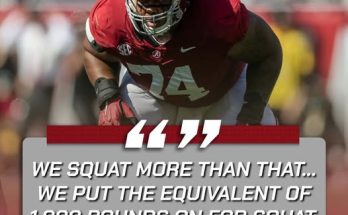The Oklahoma City Thunder have steadily developed a reputation as one of the NBA’s most forward-thinking organizations, blending a patient rebuild with an acute understanding of how to deploy players in ways that amplify their strengths while masking their weaknesses. This is why the conversation around Alex Caruso’s usage model is so relevant for the Thunder right now. In recent years, Caruso has been the quintessential “impact beyond the box score” player — someone who isn’t tasked with carrying the offensive load, but who maximizes every minute he’s on the floor with elite defense, smart decision-making, and relentless effort. The Thunder, with their current roster construction and trajectory, have an opportunity to lean into this model again for players whose greatest value comes from specialized roles rather than high-usage offense. By doing so, they can preserve the health of their core stars, sustain their defensive intensity, and raise their ceiling in playoff basketball.
Caruso’s time with the Lakers and Bulls offers a clear blueprint for what such a role looks like in practice. On the Lakers, he was never a high-volume scorer or primary initiator, yet he regularly ranked among the league leaders in net rating when on the floor with LeBron James and Anthony Davis. His job was to defend the opponent’s top guard or wing, make quick, decisive passes, keep the offense flowing, and space the floor just enough to force defenders to stay honest. The Bulls have since employed him in much the same way — using him in bursts that allow him to go all-out defensively without fear of burning out over the course of the season. This role doesn’t pad the stat sheet, but it generates tangible team success because it allows stars to conserve energy for moments when they’re most needed. For the Thunder, who have one of the youngest and deepest rosters in the league, the parallels are obvious.
In Oklahoma City’s current setup, the offensive hierarchy is already established. Shai Gilgeous-Alexander is the engine, with Jalen Williams and Chet Holmgren providing dynamic secondary options. This means there’s room — and need — for role players who excel in high-intensity spurts rather than heavy-minute, high-usage scenarios. Lu Dort has already played a Caruso-like role for years, embracing tough defensive assignments, hitting timely threes, and providing physicality against elite scorers. But the Thunder could take this further by being intentional about how and when Dort and others are used, ensuring they’re at peak energy during the biggest moments. Instead of running them for extended stretches where diminishing returns set in, a rotational pattern that mirrors Caruso’s would keep them fresh and devastating.
The logic behind this is rooted in efficiency. Caruso’s teams have historically posted better defensive ratings when he’s on the floor, not simply because of his individual defense, but because of the way his presence allows others to do less defensively and more offensively. The Thunder can harness this with their own personnel. A player like Kenrich Williams, for instance, brings a similar intangible impact — toughness, communication, and hustle that stabilizes lineups. Rather than trying to stretch his minutes too far, using him like Chicago uses Caruso — in key defensive matchups, closing certain quarters, and energizing the bench units — could optimize his contributions.
There’s also a playoff layer to this strategy. The postseason is a different game, one where matchups dictate everything and possessions are more deliberate. Caruso’s usage model thrives in that environment because it’s not about raw numbers — it’s about controlling the highest-leverage situations. Imagine the Thunder in a tight Game 5 against a seasoned playoff team. Having a rested Dort ready to shadow an opposing star for an entire fourth quarter, rather than someone who’s been logging heavy minutes all game, could be the difference between a win and a loss. Strategic rest within games, even if it means slightly fewer minutes overall, maximizes intensity when it matters most.
From a developmental standpoint, the Caruso blueprint is also valuable for younger Thunder players who might not yet be ready for expanded offensive roles but can still make an impact. Rookies and sophomores often try to do too much in limited minutes, which can lead to turnovers and defensive lapses. Teaching them the discipline of a defined, high-effort role — the way Caruso operates — could speed up their acclimation to NBA-level play. They would learn how to affect winning without having the ball in their hands all the time. This approach also complements Oklahoma City’s emphasis on ball movement and spacing, as low-usage players who make quick decisions fit seamlessly into that system.
One of the understated benefits of this model is its effect on team culture. Caruso has always been a “glue guy” who sets the tone with effort and unselfishness. The Thunder already have a strong culture under Mark Daigneault, but reinforcing it through usage patterns sends a clear message: every role is essential, and high-energy, low-glory work is valued just as much as scoring 25 points. When a coaching staff consistently rewards defensive effort, hustle plays, and selfless decision-making with meaningful minutes in critical situations, it cultivates buy-in across the roster. This kind of role clarity also reduces friction — players know exactly what’s expected of them and can prepare accordingly.
Critics might argue that the Thunder shouldn’t limit the minutes of their best defenders, particularly in the regular season where rhythm and chemistry are built through consistent play. But this is where the nuance of Caruso’s usage plan comes into play. It’s not about cutting minutes indiscriminately — it’s about optimizing them. Caruso still plays in the mid-to-high 20s in terms of minutes per game, but those minutes are distributed in ways that allow him to be fresh for end-of-half defensive stands, late-game possessions, and matchups against the league’s most dangerous scorers. The Thunder can emulate this without sacrificing overall cohesion, especially given their depth. With multiple capable defenders, they can rotate assignments while ensuring that their top stoppers are ready for the game’s most pivotal stretches.
It’s also worth noting that the NBA’s 82-game grind can wear down even the most conditioned players. By borrowing from the Caruso model, Oklahoma City could help preserve the health and legs of its defensive workhorses for the long haul. The Thunder are not in a position where they need to push for every single regular-season win at the expense of the postseason — their timeline is still building toward sustained contention. Managing minutes with an eye toward peak playoff performance is a sign of a mature, long-term approach.
Moreover, Caruso’s usage plan aligns perfectly with the Thunder’s analytical leanings. Oklahoma City has embraced data-driven decision-making in player development and rotation management. Advanced metrics repeatedly show that defensive intensity wanes with fatigue, and that high-leverage possessions have disproportionate impacts on game outcomes. Structuring rotations to ensure the team’s best disruptors are on the floor for those moments is simply smart basketball. In an era where player tracking can monitor effort levels, speed, and even biometric feedback in real time, the Thunder have the tools to fine-tune this strategy with precision.
In the end, mirroring the Alex Caruso usage model isn’t just about copying another team’s approach — it’s about recognizing a proven framework that fits the Thunder’s identity. Oklahoma City is young, deep, and built around a superstar guard who thrives when surrounded by energy players willing to do the dirty work. By managing those players’ minutes with intention, the Thunder can sustain elite defensive pressure, protect their stars, and keep their role players fresh for the moments that decide games and series. It’s the kind of subtle tactical adjustment that might not dominate headlines in January, but could pay enormous dividends in May and June.
If the Thunder want to maximize their current trajectory without overextending their roster, they would be wise to take a page from the Caruso playbook. Use defensive specialists in strategic bursts. Keep them fresh for the defining possessions. Value impact over volume. In doing so, they can ensure that when the lights are brightest, their best disruptors are at their most dangerous — just like Alex Caruso has shown time and again. The blueprint is there; it’s up to Oklahoma City to follow it.



